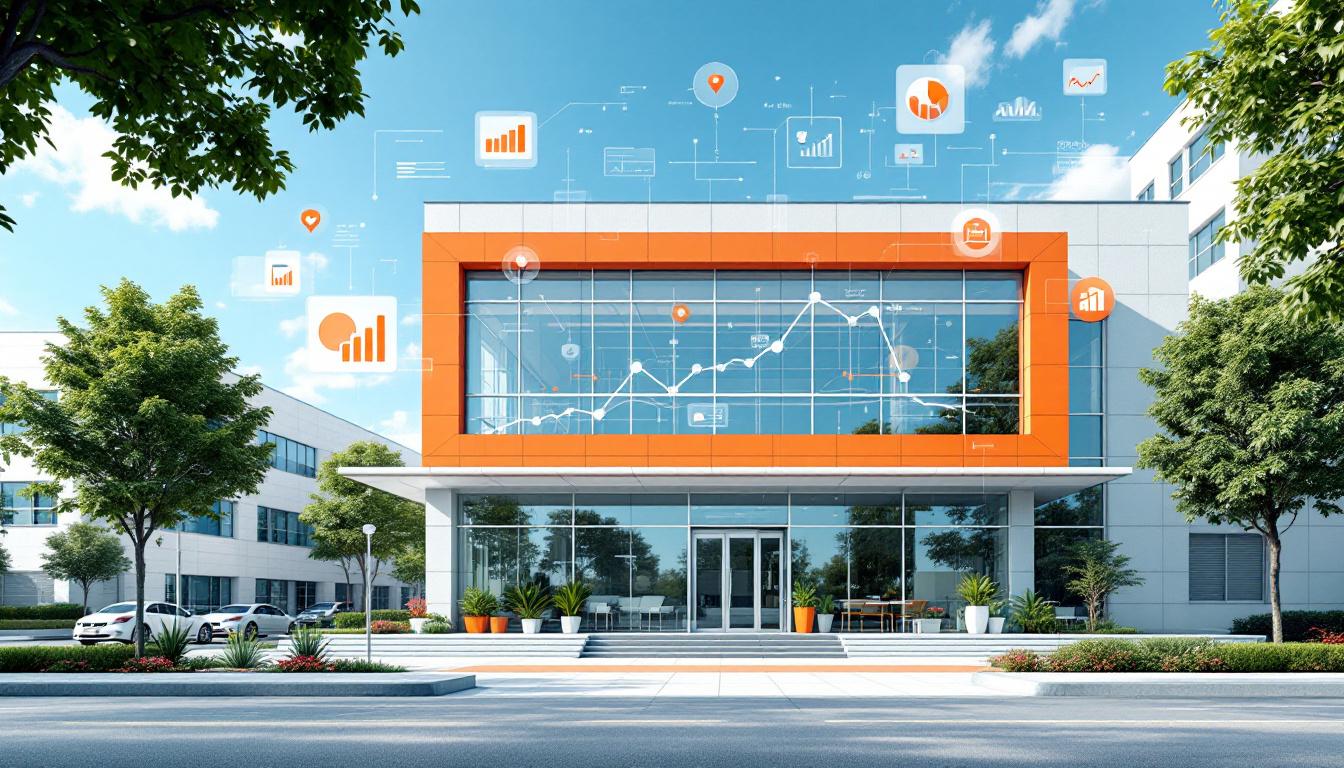Best Practices for Emergency Preparedness Marketing
Effective Strategies to Elevate Emergency Preparedness Campaigns
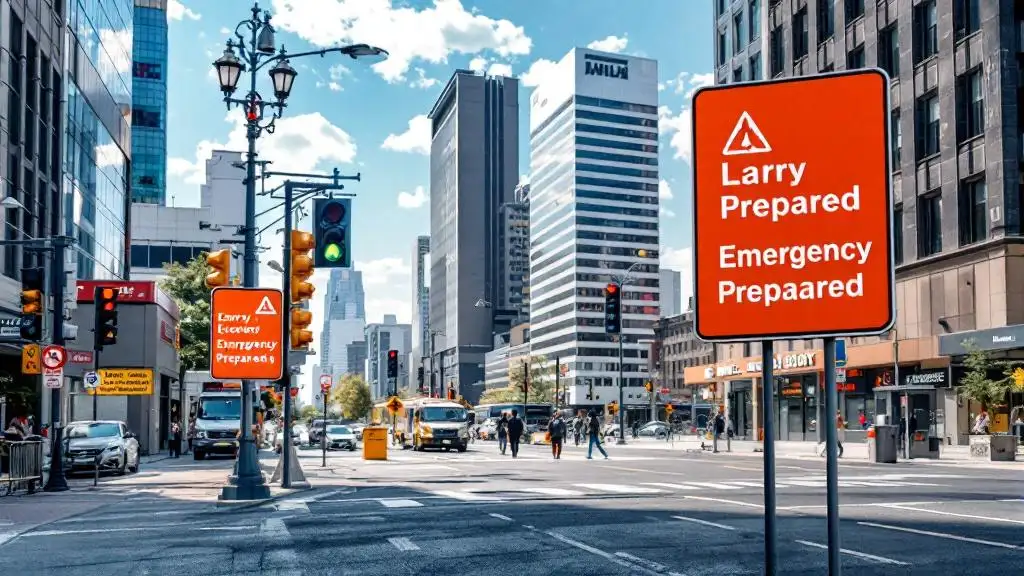

Best Practices for Emergency Preparedness Marketing
Setting the Stage for Resilient Communities
In an increasingly unpredictable world, the importance of robust emergency preparedness marketing cannot be overstated. By employing best practices, organizations and communities can enhance awareness, foster preparedness, and improve response outcomes. This article explores proven strategies grounded in federal guidance, including FEMA and the SBA, to empower organizations with effective communication, planning, and situational awareness techniques.
Understanding Emergency Preparedness Phases and the 5 P's Framework
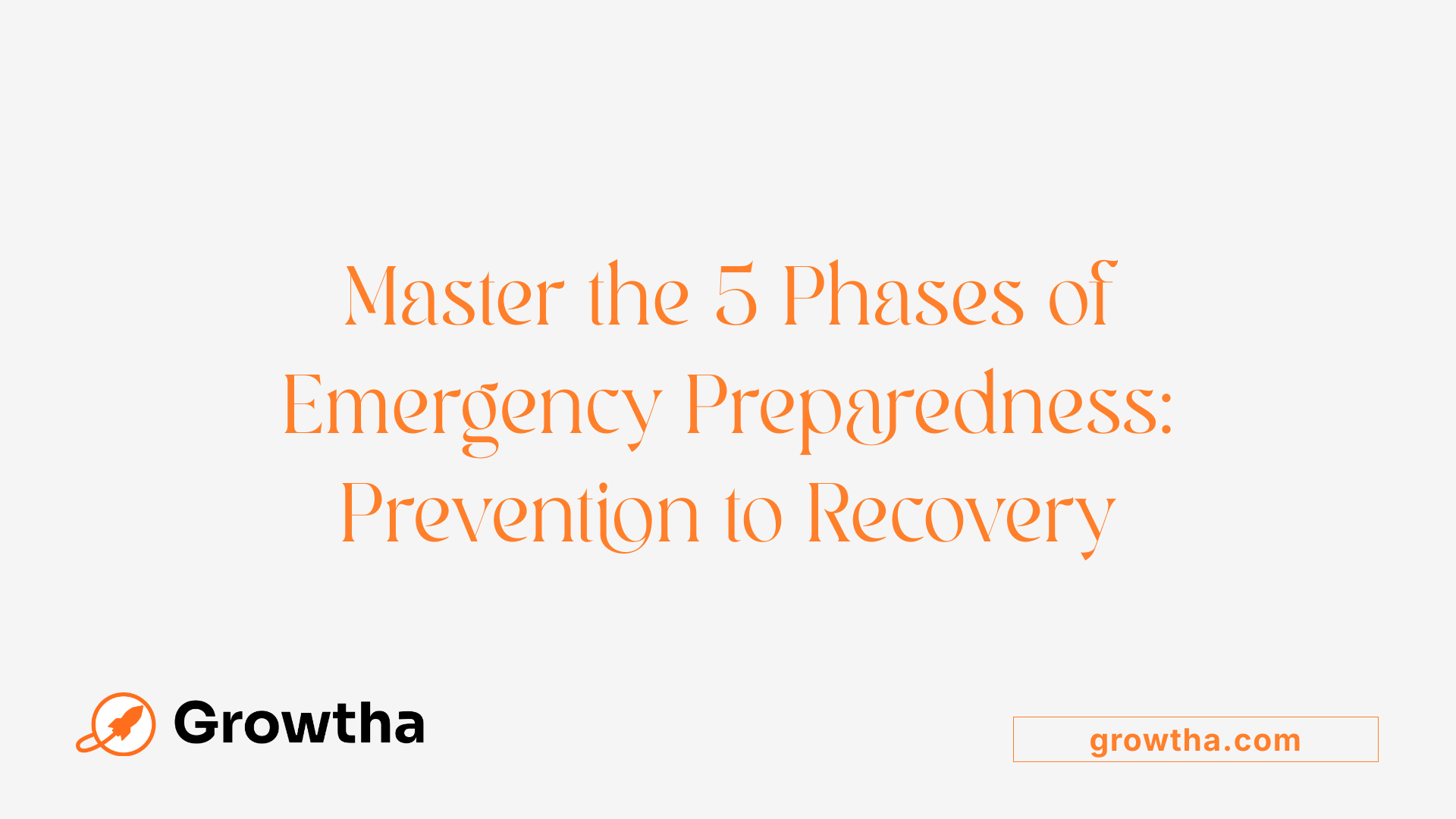
What are the five phases of emergency preparedness?
The five phases of emergency preparedness are prevention, protection, mitigation, response, and recovery. Prevention involves actions aimed at avoiding or stopping disasters before they happen. This can include measures like threat identification, security enhancements, and strategic planning to prevent hazards from occurring.
Protection focuses on safeguarding communities and resources against potential dangers. Examples include implementing strict building codes, installing security systems, and developing protective infrastructure to minimize harm.
Mitigation aims to reduce the overall impact of disasters. Methods include land use planning, establishing building standards, and reinforcing infrastructure to withstand hazards such as floods, earthquakes, or storms.
Response and recovery are activated during and after an emergency. Response entails immediate actions to manage hazards and protect life and property, such as evacuations and emergency services deployment. Recovery involves restoring normalcy by rebuilding infrastructure, providing support services, and evaluating response effectiveness.
Together, these phases form a comprehensive framework that enhances community resilience, helping individuals, businesses, and governments prepare for various emergencies effectively.
Strategic Communication in Emergency Planning and Community Engagement
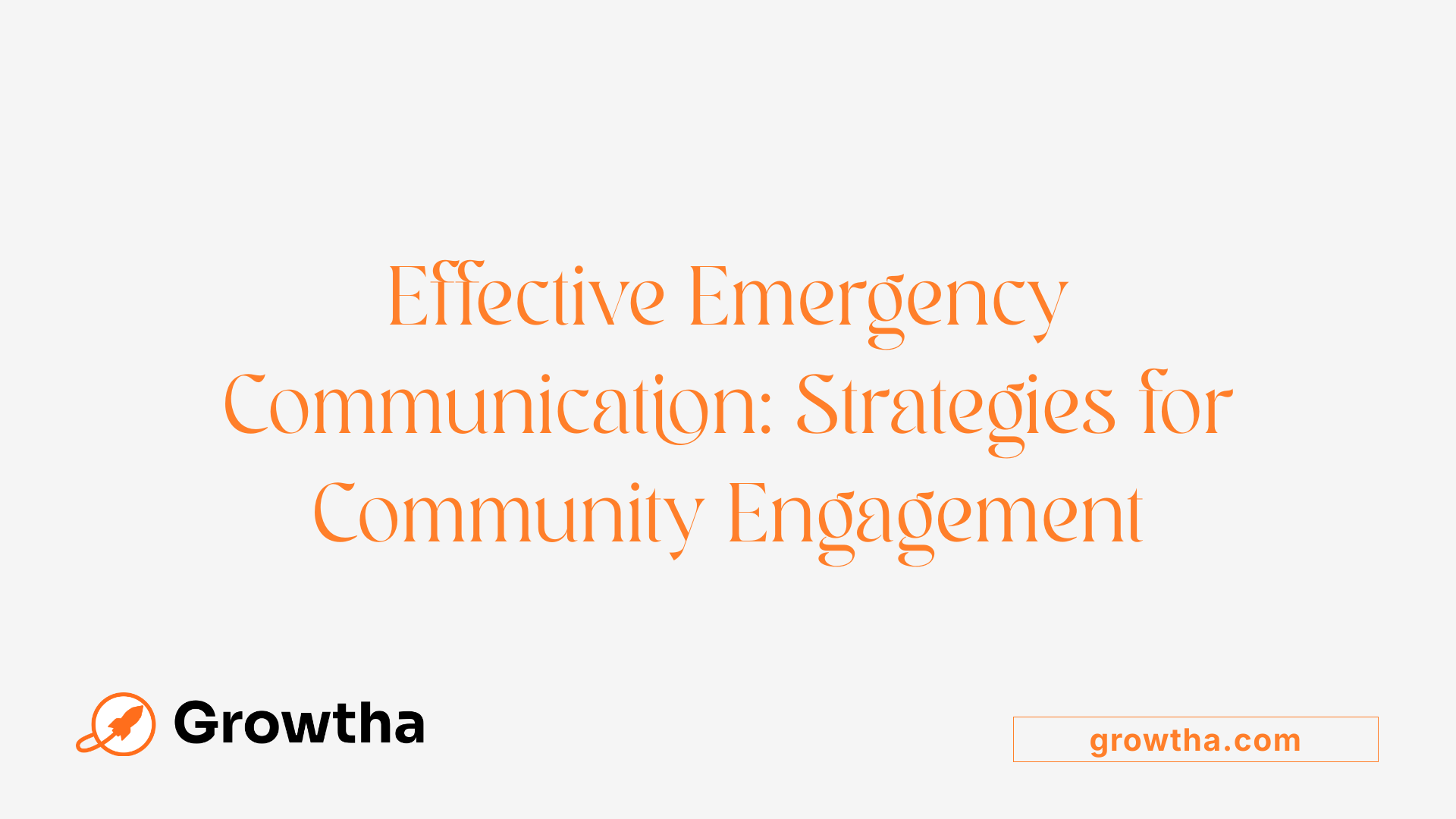
What are effective communication strategies during emergencies?
During emergencies, effective communication is about delivering clear, accurate, and timely messages to all members of the community. Using multiple channels ensures that information reaches diverse audiences, regardless of their preferred platform. It is crucial to craft messages that are easy to understand and culturally sensitive, making sure they are accessible to everyone, including people with disabilities or limited English proficiency.
Coordinating with public health officials, community organizations, and local authorities helps maintain message consistency. Utilizing alert systems—such as sirens, SMS alerts, and social media—can provide specific guidance on protective actions, potential impacts, and response steps.
Transparency and empathy foster trust and cooperation from the public. Providing regular updates before, during, and after incidents, along with pre-incident education, enhances community resilience. An inclusive approach ensures that all community members are informed and can participate in preparedness and response activities.
How can social media and digital channels be used for emergency communication?
Social media and digital platforms are powerful tools for rapid, wide-reaching emergency communication. Platforms like Twitter, Facebook, and Instagram enable authorities to share real-time updates, safety instructions, and multimedia content, such as photos and videos that provide visual situational awareness.
These channels facilitate direct interaction with the public, allowing individuals to ask questions, report incidents, and receive verified information. This two-way communication helps counter misinformation, which can spread quickly during crises.
Analyzing social media data during emergencies can assist responders in understanding where the needs are greatest and tailoring response efforts accordingly. However, it’s essential to supplement digital communication with traditional methods, such as local broadcast radio and community notice boards, to maintain outreach if internet or power outages occur.
Importance of FEMA and other agencies in guiding communication efforts
FEMA and related agencies play an essential role in shaping effective emergency communication strategies. They provide guidelines, best practices, and resources that help organizations develop comprehensive messaging plans aligned with federal standards.
FEMA’s guidance emphasizes the importance of clear messaging, multi-channel dissemination, community engagement, and ongoing education. For example, FEMA recommends establishing crisis communication plans that integrate traditional and digital media, ensuring messages are culturally appropriate and accessible.
Additionally, agencies oversee programs like the Ready Rating™ and offer templates for communication plans, training modules, and warning systems. Their leadership helps create a coordinated approach that enhances preparedness, response, and recovery efforts across communities.
Effectiveness of using social media, local partnerships, and traditional media
Combining social media with local partnerships and traditional media maximizes outreach and community trust. Social media provides a rapid, interactive platform for updates and engagement. Local partnerships—such as collaborations with community leaders, businesses, and organizations—help disseminate messages through trusted channels and networks.
Traditional media, including radio, television, and printed materials, serve as reliable backup sources, especially in areas with limited internet access or during technological disruptions. This multi-pronged approach ensures redundancy, increasing the likelihood that messages will reach every segment of the population.
Together, these methods foster community engagement and ensure that emergency communication is both comprehensive and adaptive. Regular joint exercises, public education campaigns, and feedback collection further improve communication strategies and strengthen community resilience.
| Approach | Benefits | Challenges |
|---|---|---|
| Social Media Engagement | Rapid dissemination, multimedia sharing, direct interaction | Misinformation risk, digital divide |
| Local Partnerships | Trusted dissemination, community reach | Coordination complexity |
| Traditional Media | Widespread reach, reliability in outages | Slower response times, less interactivity |
Effective emergency communication integrates these channels seamlessly, ensuring that during a crisis, vital information is accessible, timely, and credible, helping protect lives and property while fostering community strength.
Developing Business-Specific Emergency Response and Business Continuity Plans

How should businesses evaluate risks specific to their operations?
Assessing hazards tailored to your business is the foundation of an effective emergency plan. It involves identifying environmental threats such as hurricanes, wildfires, floods, or winter storms, alongside operational risks like cyberattacks and supply chain disruptions. Conducting a hazard vulnerability assessment (HVA) or a thorough hazard identification and risk assessment (THIRA) helps rate these risks based on their likelihood and impact on your operations.
Start by examining your physical location and community environment for natural hazards. Then, consider operational and technological vulnerabilities, including digital threats like cyberattacks or data breaches. Evaluate economic risks, such as market downturns, and community risks that could affect customer access or employee safety. Combining these insights allows businesses to prioritize mitigation efforts effectively.
| Risk Category | Examples | Mitigation Focus |
|---|---|---|
| Environmental | Hurricanes, flooding | Structural reinforcements, flood barriers |
| Operational | Cyberattacks, supply chain disruptions | Cybersecurity measures, diversified suppliers |
| Economic | Market fluctuations, bankruptcy | Financial reserves, diversified revenue streams |
| Community | Power outages, transportation strikes | Emergency power systems, alternate transportation plans |
Understanding your specific vulnerabilities enables targeted preparation, so your response plans can address real risks effectively.
Leveraging Resources and Tools for Effective Emergency Preparedness Marketing
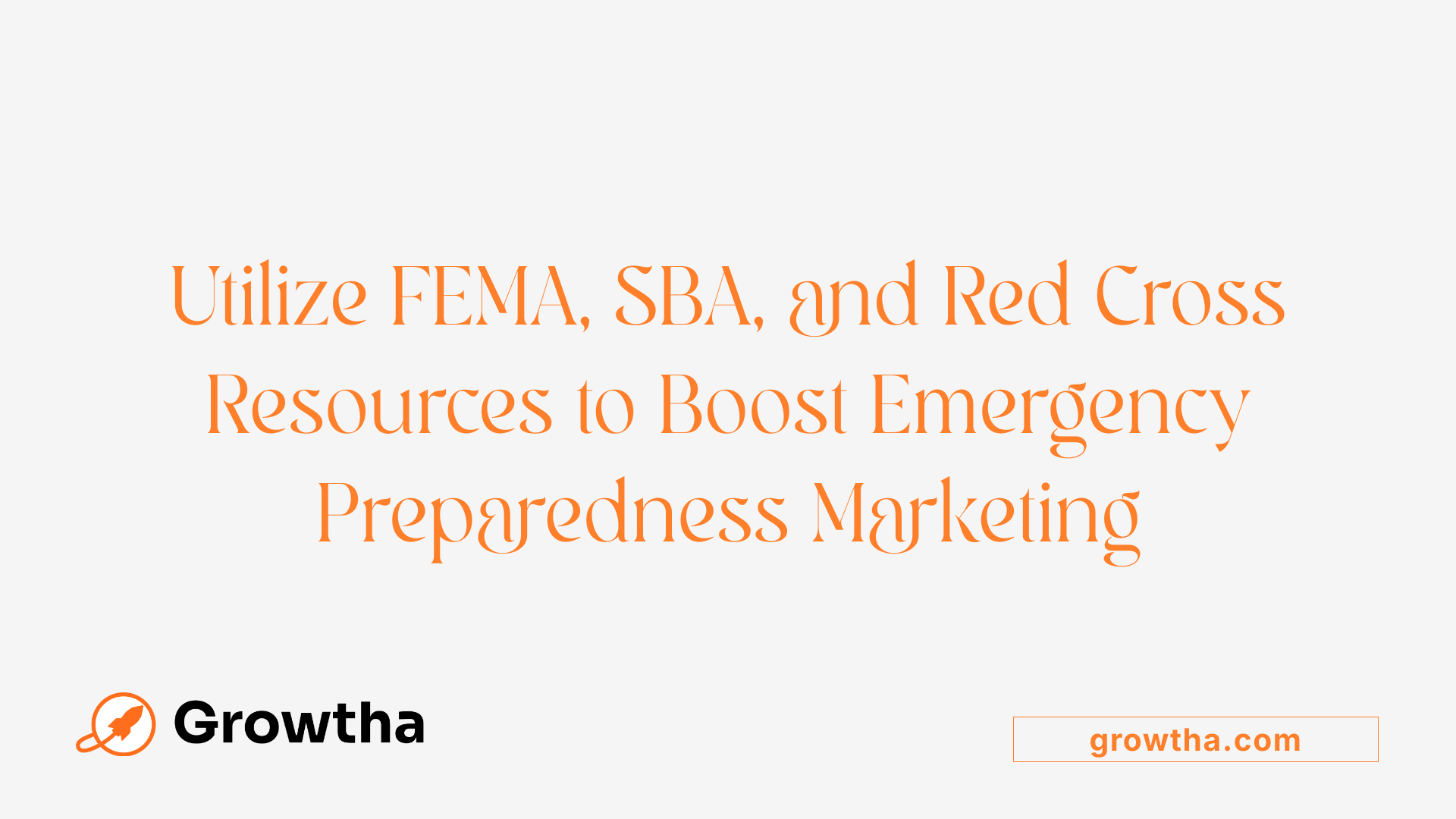
What resources and tools are available for emergency preparedness marketing?
Effective emergency preparedness marketing relies on a variety of authoritative resources and tools designed to help businesses and communities prepare for diverse disasters. FEMA offers comprehensive checklists, educational materials, and online toolkits that serve as essential guides for assessing risks and developing robust emergency plans.
One of the flagship programs is the FEMA 'Ready Business' initiative, providing hazard-specific toolkits, ready-made emergency plans, and resources focused on incident management, communication, and continuity planning. These materials are tailored to help organizations understand their vulnerabilities and implement proactive measures.
The Small Business Administration (SBA) complements FEMA’s efforts with its Business Resilience Guide, which includes step-by-step procedures for risk assessment, plan development, and recovery strategies. This guide encourages businesses to evaluate environmental, operational, economic, and community risks—key factors that influence their resilience.
Digital resources like FEMA’s educational videos and interactive tools, such as the Cyber Ready Community Game, foster community engagement and educate the public about cybersecurity and general emergency preparedness. Social media preparedness toolkits enable organizations to reach wider audiences quickly and effectively.
Furthermore, online collaborative platforms like PrepToolkit support multi-sector partnerships, enabling users to share safety activities, success stories, and best practices for building community resilience. These tools facilitate peer learning and continuous improvement in emergency preparedness efforts.
In addition to FEMA and SBA resources, organizations can access Red Cross programs that offer First Aid, CPR, and AED training to enhance workplace safety. The Red Cross’s Ready Rating™ program provides self-assessment tools for businesses to evaluate and bolster their preparedness levels.
Overall, these diverse resources work together to heighten awareness, provide training, and enable businesses and communities to take proactive steps in disaster mitigation, response, and recovery. Leveraging these tools effectively can significantly improve organizational resilience and community safety during emergencies.
Continuous Improvement and Training in Emergency Preparedness
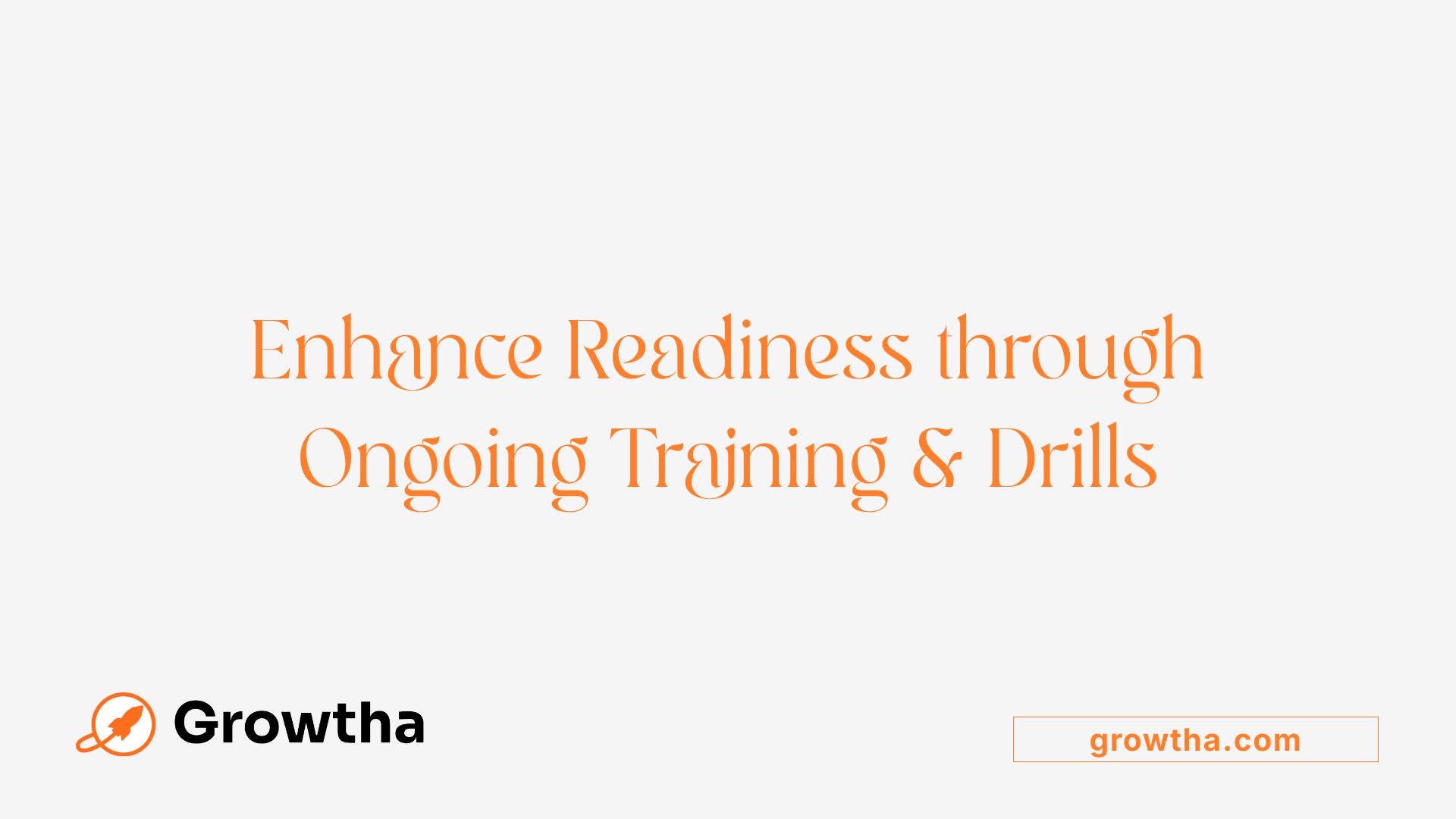
How can organizations educate employees about emergency response procedures?
Organizations can effectively educate staff by providing comprehensive training that covers all aspects of emergency response. This includes hazard recognition, reporting protocols, evacuation procedures, and the proper use of personal protective equipment. To reinforce learning, practical exercises such as drills, tabletop simulations, and hands-on demonstrations are essential.
Regular refresher courses are crucial; ideally, training should be conducted at least once a year. This is especially important for workplaces with higher risks, ensuring employees retain vital skills and knowledge.
Creating a clear, tailored emergency action plan suited to the specific hazards of the environment helps guide employees during an actual emergency.
Designating emergency response teams and conducting role-specific training ensures coordinated and swift action when needed. This structured approach improves overall response effectiveness and enhances safety for everyone involved.
What are the best practices for training and awareness initiatives in emergency preparedness?
Best practices include conducting regular drills and scenario testing, which familiarize staff with actual response steps.
Utilizing self-assessment tools like the Red Cross Ready Rating™ program encourages continuous improvement. This free self-assessment helps organizations identify preparedness gaps, set improvement goals, and track progress over time.
Comprehensive employee training should include hazard recognition skills, lifesaving techniques such as First Aid, CPR, and AED use, alongside instructions for utilizing safety equipment.
Establishing clear communication channels and providing training materials that are accessible and easy to understand fosters an ongoing culture of awareness.
To maintain resilience, organizations should engage staff through interactive modules, online learning opportunities, and regular updates to training content.
This continuous cycle of education and practice ensures response actions become instinctive, reducing panic and confusion during actual emergencies.
Additional Resources and Strategies
Using FEMA’s guidance, public safety organizations promote ongoing engagement and education that make emergency preparedness a regular part of workplace culture.
Incorporating exercises like emergency drills, coupled with post-incident reviews, can help organizations refine their plans.
Encouraging staff to attain safety certifications and participate in community safety programs Amplifies overall preparedness.
Ultimately, fostering a proactive environment where safety awareness is ingrained helps organizations minimize risks and ensures quick, coordinated responses to any hazard.
| Strategy | Example Activities | Benefits |
|---|---|---|
| Regular drills and simulations | Fire drills, earthquake drills, cybersecurity exercises | Builds familiarity, tests plans, identifies gaps |
| Self-assessment tools | Red Cross Ready Rating™, OSHA self-assessment checklists | Promotes continuous improvement, self-evaluation |
| Staff training in lifesaving skills | First Aid, CPR, AED courses | Enhances emergency response capability |
| Clear communication plans | Emergency contact lists, digital alerts, signage | Ensures timely information dissemination |
| Ongoing education initiatives | Safety newsletters, online modules, workshops | Maintains awareness, updates knowledge |
By integrating these practices into daily operations, organizations can strengthen their emergency preparedness and build a resilient workforce ready to face potential hazards.
Building a Resilient Future through Effective Preparedness
Implementing comprehensive and strategic emergency preparedness marketing practices is essential for safeguarding communities and businesses alike. Leveraging authoritative resources like FEMA, SBA, and Red Cross, organizations can develop tailored communication strategies, conduct thorough risk assessments, and foster an ongoing culture of readiness. Through continuous training, community engagement, and the use of innovative digital tools, stakeholders can ensure that they are well-prepared for any eventuality. Ultimately, resilient communities are built through proactive planning, transparent communication, and persistent commitment to emergency readiness — the cornerstone of sustainable development and public safety.
References
- [PDF] A Social Marketing Approach to Disaster Preparedness Education
- Prepare for emergencies | U.S. Small Business Administration
- Disaster Preparedness: A Digital Marketing Perspective
- [PDF] Emergency Management Guide for Business and ... - FEMA
- How to Write an Emergency Preparedness Plan in 7 Steps | CO
- 7 Best practices for emergency managers - Everbridge
- Disaster Recovery Plan for Small Business
- Small Business Preparedness - U.S. Chamber Foundation


